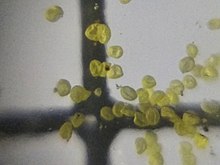PLANT CARE ( Codiaeum Variegatum Iceton | Croton ) BUY NOW
 |
Codiaeum Variegatum Iceton | Croton also needs warmth. They are happy in temperatures from 18-29°C. |
 |
Codiaeum Variegatum Iceton | Croton needs plenty of bright light. Direct sunlight for at least a few hours a day is recommended. |
 |
Increased humidity levels are a must. Stand on a wet pebble tray to improve humidity and mist frequently. |
 |
Codiaeum Variegatum Iceton | Croton needs to be in damp soil at all times. They do not respond well to a soil that is wet or dry. |
ADDITIONAL CARE
Codiaeum Variegatum Iceton | Croton needs careful placement if it is to thrive. Position in a warm room with a constant temperature above 16C (60F). For the best leaf color, choose a bright position in good light, but away from the glare of the direct sun – an east or west-facing window is ideal.
Codiaeum variegatum (fire croton, garden croton, or variegated croton; syn. Croton variegatum L.) is a species of plant in the genus Codiaeum, which is a member of the family Euphorbiaceae. It was described by Carl Linnaeus in 1753. It is native to Indonesia, Malaysia, Australia, and the western Pacific Ocean islands, growing in open forests and scrub.[2][3][4]
The garden crotons should not be confused with Croton, a cosmopolitan genus also in the Euphorbiaceae, containing more than 700 species of herbs, shrubs and trees.
Description
It is a tropical, evergreen, monoecious shrub growing to 3 m (9.8 ft) tall and has large, thick, leathery, shiny evergreen leaves, alternately arranged, 5–30 cm (2.0–11.8 in) long and 0.5–8 cm (0.20–3.15 in) broad. The leaf blades can, for example, be ruler-lanceolate, oblong, elliptic, lanceolate, ovate inverted, ovate spatulate, or violin-shaped and coloured green, yellow, or purple in various patterns, depending on the variety. The petiole has a length of 0.2 to 2.5 cm. The inflorescences are long racemes, 8–30 cm (3.1–11.8 in) long, with male and female flowers on separate inflorescences; the male flowers are white with five small petals and 20–30 stamens, pollens are oval approximately 52×32 microns in size. The female flowers yellowish, with no petals. The flowering period is usually in early autumn. The fruit is a capsule 9 mm (0.35 in) in diameter, containing three seeds that are 6 mm (0.24 in) in diameter. When cut, stems bleed a milky sap like many of the Euphorbiaceae.[2][3][5]
Cultivation
Male inflorescence on a plant in Hyderabad, India.
In tropical climates, crotons make attractive hedges and potted patio specimens, valued for their striking foliage. They only survive outdoors where temperatures do not normally drop below 10° to 13 °C in winter; colder temperatures can cause leaf loss.[3] In colder climates, the plants are grown in greenhouses or as house plants. The cultivated garden crotons are usually smaller than the wild plant, rarely over 1.8 m tall, and come in a wide diversity of leaf shapes and colours. They are sometimes grouped under the name Codiaeum variegatum var. pictum (Lodd.) Müll. Arg.,[3] though this is not botanically distinct from the species and usually treated as a synonym of it.[2]
Cultivars
The several hundred cultivars are selected and bred for their foliage. Depending on the cultivar, the leaves may be ovate to linear, entire to deeply lobed or crinkled, and variegated with green, white, purple, orange, yellow, red, or pink. The colour patterns may follow the veins or the margins, or be in blotches on the leaf. Popular cultivars include ‘Spirale’, which has spirally twisted red and green leaves; ‘Andreanum’, which has broadly oval yellow leaves with gold veins and margins; ‘Majesticum’, which has pendulous branches, with linear leaves up to 25 cm long with midrib veins yellow maturing to red; and ‘Aureo-maculatum’, which has leaves spotted with yellow.[3]
Toxicity
As with many of the Euphorbiaceae, the sap can cause eczema in some people.[6] The bark, roots, latex, and leaves are poisonous.[7] The toxin is the chemical compound 5-deoxyingenol.[7] The plant contains an oil which is violently purgative and is suspected of being a carcinogen.[8] Consumption of the seeds can be fatal to children.[8]
Gallery
-
-
Completely yellow leaves on a specimen in Kolkata, India








